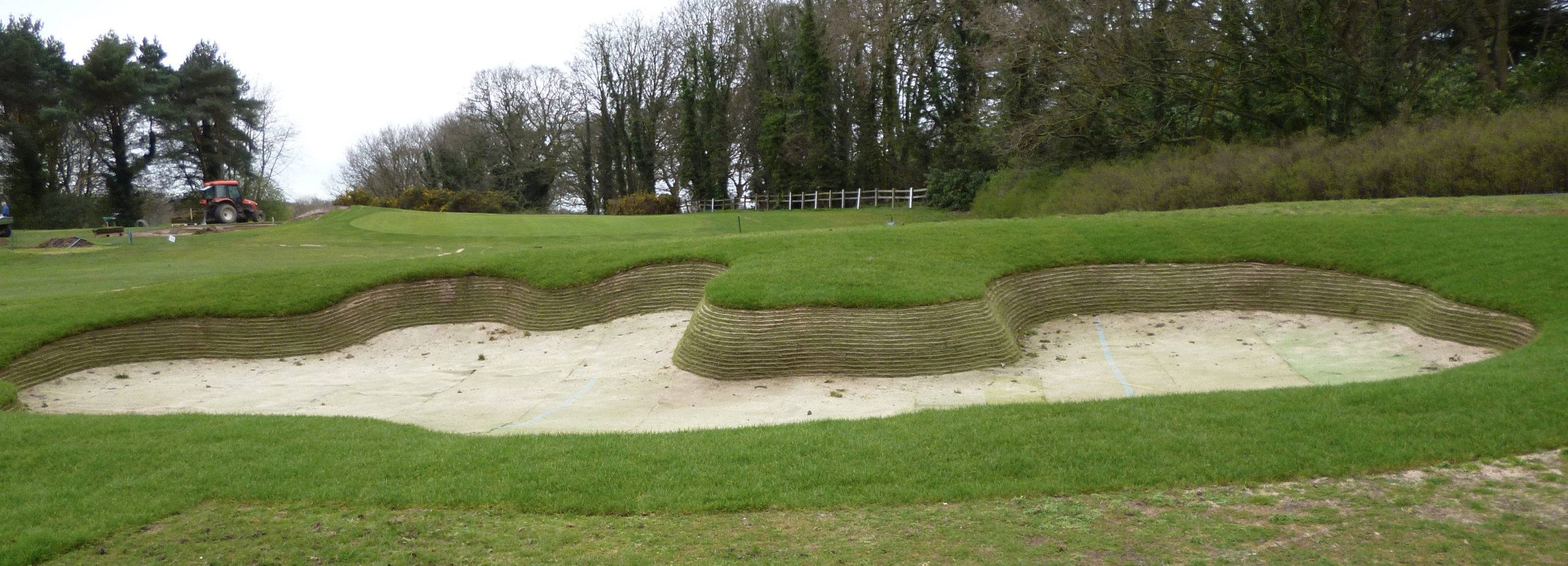Bromborough Golf Club, located on the Wirral peninsula to the west of Liverpool, is almost half-way through an ambitious multi-year upgrade of its bunkers. And the ambitious parkland club is using the EcoBunker edging system to recapture the original shape of its traps.
Course manager Darren Anderson explained: “When I came to the club for an interview, about two-and-a-half years ago, and was asked what I’d like to do to the course, I said that I’d install EcoBunker. I saw the system demonstrated at a seminar during my previous job, and I really liked the way it allowed you to establish a permanent shape to your bunkers. The club hired me and bought into my idea – we did a member survey, and the first, second and third issues the members wanted dealing with were the bunkers – so we contacted Richard Allen at EcoBunker and got started.”
Initially the club decided to construct EcoBunkers around four greens. The EcoBunker project is part of a larger course improvement scheme that incorporates a new irrigation system, and which is expected to run for several years. The first stage was completed in spring 2020, and stage two is now underway. This stage has been scaled down because of the COVID pandemic, and therefore includes the greenside bunkers on only one hole, the fifth.
As well as the EcoBunker edging solution, Bromborough has installed the company’s EcoSward bunker liner. Anderson says the performance has been outstanding on the bunkers rebuilt so far. “None of them flood, even in extremely wet weather such as we have had this autumn,” he explained. “Because we are working to a tight budget, we have to get member approval for each stage of the project, and the response to the bunkers we have done has been outstanding.”
All the work has been done in-house by Anderson’s team after training by EcoBunker staff. The rest of the bunkers on the course will follow over the next three winters.

Anderson said: “When we started digging down around the bunkers, we expected to find some sandsplash, but the amount really surprised us. We had to go down more than two feet to find the native soil, which led us to uncover the original bunker edges. The rollovers on the edge were much less sharp originally than they had become, and they were much more in keeping with the landscape. So that is the look that we have locked in using EcoBunker.
“One of the best things about the system is its versatility. It is easy to make whatever shape you want. People think that it is only suitable for links-style revetted pots, but that is a long way from the truth. Our agronomy advisers were very hostile to us using EcoBunker initially – they said ‘Links-style bunkers don’t work in a parkland environment’. We tried to explain that we had no intention of building pot bunkers, and when they came back to review the courses after the work, we said ‘What’s our best feature?’ and they answered ‘the EcoBunkers!’”

